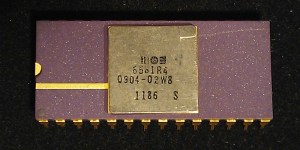
In the before-time (I’m talking about the 1980’s here), when home computers were considered to be consumer items, there was the Commodore C64. The C64 derived its vast array of superpowers from two Integrated Circuits (IC) named VIC and SID standing for Video Interface Chip and Sound Interface Device. Chip names were part of our culture back them, from VIC up to Fat AGNES in the end.
We spoke about VIC and SID as if they were people or distant relatives, sometimes cantankerous or prone to sudden outburst, but there was always an underlying respect for the chips and the engineers who made them. VIC and SID together made one of the world’s best video and sound experiences; movement and noise, musical notes and aliens.
 I was going on my second week as a young upstart engineer working for Commodore in the offices above the MOS chip fab building, when the head of engineering and my boss, [Shiraz Shivji], pulled me into his office. It had been a blusterous two weeks with un-imagined technology ever-present and spilling out from the offices as one roamed the halls. Video games played in one out of every two doorways causing one to wonder how many people were working, how many just goofing off, and how many were doing both at the same time.
I was going on my second week as a young upstart engineer working for Commodore in the offices above the MOS chip fab building, when the head of engineering and my boss, [Shiraz Shivji], pulled me into his office. It had been a blusterous two weeks with un-imagined technology ever-present and spilling out from the offices as one roamed the halls. Video games played in one out of every two doorways causing one to wonder how many people were working, how many just goofing off, and how many were doing both at the same time.
I had already been on my own whirlwind tour of duty in that short time. 25 years after I went to work for Commodore I found out by reading [Brain Bagnal’s] book On the Edge that I had been hired only as a lowly technician. I had been immediately upgraded to programmer on my first day to fill in for a programmer who was out on vacation. They put me in his chair in a small office with 2 other people. All of the offices held three people at most; if we could have dispensed with the door we undoubtedly would have had four stuffed in the same space.
This office was unlike any other office. This office had a large collection of spider plants. I felt blessed to be working at Commodore and even more so sitting in the only office with green growing things.

I didn’t get any of my software assignment done, I literally couldn’t sit in a chair with so much wonder in the air, I kept ending up in the hardware labs. On Friday of the first week I became the victim of what we called back then a “drive-by”. The head of engineering was passing by me in the hall when he stopped my foursome wanting to talk about chip yield. Somehow out of this group I was the guy picked to represent the Engineering R&D Department at that particular moment.
I must have done well, and I’m sure I’ll share that full story another time. The short of it was that I solved a problem rather than just having averted blame. The next time I was pulled into [Shiraz’s] office felt like another drive-by. I sat down attentively ready for my new mission. What I lacked in training and experience I was going to try and make up with exuberance.
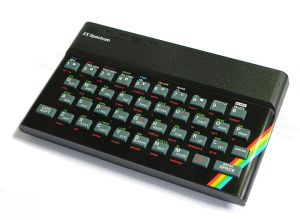
[Shiraz] opened a Commodore-made file cabinet (and you thought we just made computers) and showed me a Timex/Sinclair Spectrum. There it sat on my side of the desk; the competition, those that would steal our lunch money to feed themselves. The Enemy.
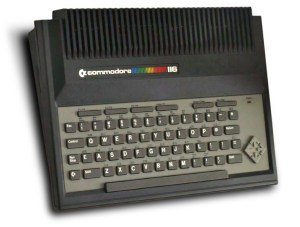
I was put in charge of the newest computer in that moment, no doubt as punishment for spending all my time in the hardware lab. I was introduced to TED, the Text Display chip, our newest single chip computer system. I didn’t mention that we had previously met, afraid that the wrong words would get me thrown off the project as quickly as I had just come on board.
A bit more of the conversations and issues surrounding the Commodore TED family can be seen in this video I made a few years back.
The standard stories aside, something happened this year when I found a rare version of the TED machine and took it to VCF with me. This TED was different from most, this one could speak to you.
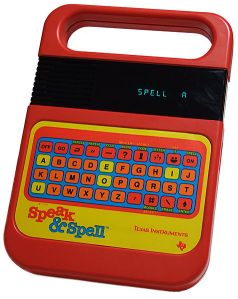
This is back in the day when only one device was known to speak, the TI Speak and Spell. So naturally Commodore went and hired, or stole, maybe coerced, the very engineering talent that gave the Speak and Spell his voice. And now TED would speak with that voice, I still remember the day TED cleared his throat and spoke, he mispronounced a few words but it was a wholly wondrous moment in time, or least in my life.
What did TED have to say? That’s a story for a different day. Keep reading with Part 2 of my story.
[Photo of MOS Building courtesy of Fran Blanche]
[Photo of C64 Motherboard courtesy of Bill Bertram]

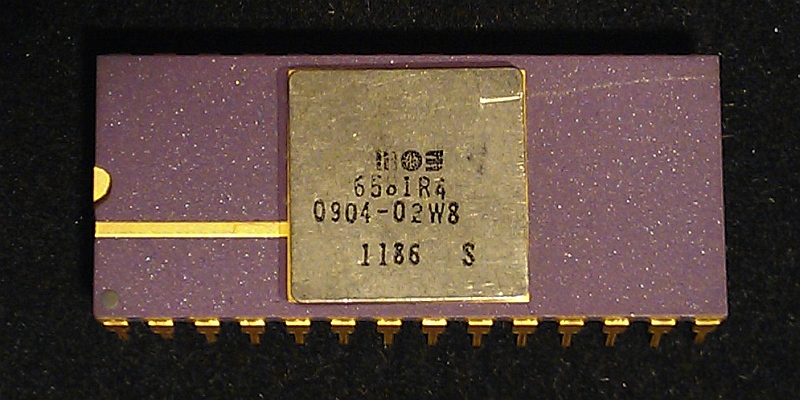


















Perhaps someone could proof-read the next instalment first.
This is story-telling, not a technical description. Different standards apply. If I were presented with this for editing, I would be deliberately conservative. There are quirks to be sure. But they reveal elements of the writer’s personality, and also work to convey the chaotic working environment at Commodore. Remove them and something is lost.
But [Bill], I will say this – don’t tease us. Leaving two stories unresolved at once is a bit much. So regarding “I’m sure I’ll share that full story another time”, I’m holding you to that. ;)
My editor [Mike] is holding me to that also.
Slightly off topic, but people just starting to make a PET emulator on the ESP8266! http://bit.ly/1JUfvxX
*installment*
Perhaps you should take your own advice. ;)
Muphry’s law
Trol detected!
Now, that is a story I like. Please more old stories here :-)
TED said “I am the Word Wizard, Welcome to My Cave!”
“In the before-time (I’m talking about the 1980’s here), when home computers were considered to be consumer items,”
What the hell are they considered now?
Essential
Based on the general understanding of the US public, they are some sort of magic box created by scientists using alchemy.
Fat AGNUS, not Agnes…
The motherboard of the Amiga 500 was called Rock Lobster, after the group B52’s, and the various co-processors (i,e custom chips) were named Paula, Denise and (fat)/(fatter) Agnus.
For us old-ish guys who started with PET, VIC20, C64 and later Amiga this is religion!!!
Religion? The only religion in the 80s was Bad Religion
https://www.youtube.com/watch?v=zDbjAeUTa2s
George Robbins was the hardware engineer on Rock Lobster (yes he liked the B52’s, he had a storage room with a stereo set up in it). George was universally known as GRR, pronounced GGRRrrrr and I believe he also put a “down with Apartheid” message on the board somewhere. GRR was also known for the fact that he would sleep in a pile of bubblewrap and would have little circles on his face when he first woke up. I called it “nesting” since all you would see is a big pile of wrap with a foot sticking out of it.
Tragically GRR passed away one night about 10 years ago, in his 40’s I believe, while working overnight at a local Philly ISP. We still discuss him and his motto of “little unix boxes that take over the world” when we old timers get together.
George was a very nice person, albeit a bit unique. It was always dangerous walking around engineering late at night / early in the morning. One never knew what you might run into :-)
Rock Lobster absolutely derived from the B-52’s.., GRR’s favorite band (GRR = George Robbins). But it was more than that. In the years after 8-bit, when the Amiga 1000 was totally setting the tech world on fire — but not selling that much — Commodore had been having some problems. Like three rounds of layoffs (the first might have culled some dead wood, the last one hit bone). So there’s was also this observation, by Jeff Porter as I recall, that “if this [the A500] doesn’t succeed, they might as well bring in the bombers and level this place”. Most other low-end Amigas also had a B-52’s inspired name.
We had some flexibility on the things we wrote on PCBs, but there were limits. At the time, I was working on the Amiga 2000. After that last layoff, the PCB still said “HAYNIE/FISHER” on top, but underneath, it had a box that said “The Few, the Proud, the Remaining”, and the initials of everyone left in Engineering. TPTB discovered this and made us take it off the final release of the A2000 main board (Rev 4).
Atari 800 was much more elegant than Commodore 64
Atari 800 had a separate display processor with its own instruction set. With Commodore 64 you could get similar results but only with fiendishly complex assembly language interrupt routines.
“Atari 800 was much more elegant than Commodore 64”
Way to start a flame war.
Actually the Commodore 64 had a much better audio chip. I got into the C64 because it was half the price of the Atari 800 when I got it.
Simple truth was I loved them both. Star Raiders rocked.
“Actually the Commodore 64 had a much better audio chip.”
Well but of course a better audio chip makes the video work better
…to even mention “Atari” in a Commodore historical piece is either really brave – or very stupid! (but as an Atari user this is perhaps not obvious… :p )
The best Atari I’ve ever owned was a 1040st – which was my door-mat for quite some time – until a couple of Amiga buddies decided to really flatten it one evening and I eventually had to bin it.
I’m still sad Commodore and Amiga went tits-up but there were too many wrongs with that company and they made some really stupid decisions, which ultimately killed both the company and the product… :(
I’m still running a few Amigas at home today and I’ve built a few SID midi players throughout the years and I can honestly say that it used to be better in the past!
We were smarter in the past as well….had to learn things is a much different fashion, if you were like me no one in a ten (maybe 50) mile radius (especially the schools) had a clue to what you were trying to do/talking about. Not mention simple tools cost hundreds of dollars.
Hundreds of dollars that were more wisely invested in drugs and booze. The 80s were a blast!
Money yes… Today people use google search to find the ready-made solution – we had to find it ourselves, and you could only afford to buy one, perhaps two, books and you had to spend those nights hacking away until you solved the problem!
I can still remember when I bought the blue book aka Amiga Hardware Reference Manual. It was the only serious book I could afford at that time. All other money was used buying computer parts… I still own that book today and I still remember large portions of it since I read it almost every night at some stage whilst trying something new using MSeka v1.80 assembler.
Those were the days! <3
A few years ago I got into electronics again and for the first time in 25 years I got the same feeling back! Yes, the blue smoke has escaped a few times but I learnt a hell lot from those events and now I find myself up at night etching a PCB or making weird stuff in eagle instead of writing 68k assembler, but I have equally fun!
I wish google search could be closed two or three days a week in order for people to start using their brain a bit more than they do today. Blue smoke can be healthy you know ;)
if you’re not burning, you’re not learning!
Pretty correct, even at the professional level, in those days. At C=, we were happy to use off-the-shelf solutions, when such things existed and didn’t suck.
Problem was, back then, so many of the in-place solutions sucked. They were idiotic. If you’re selling PCs at $5k each to big business, no problem — they have a full-time IT department paid to make sense if the stupid sh*t. When you’re making a computer for regular people — consumers and Mom & Pop business, you can’t exist on stupid.da
The Atari 400 and 800 were in some senses the predecessors of the Commodore Amiga. Similar ideas with regards to coprocessors, and they all shared the same father (Jay Miner).
Yep. The Amiga was really the follow on to the Atari 8 bit family and in many ways the Atart ST was the follow on to the C64. As I said, loved them all.
I was saving my money for an 800 when I got my job at Commodore. I remember that the Atari Antiq chipset where there were two Player-Missle objects for a total of 4 on-screen movable object blocks. They did do collision if my memory serves me.
“ANTIC”, but you’ve still got a million more geek-points than me. It had 4 Player-Missile objects (before anyone thought of calling them “sprites”), not 2. 4 main 8-bit wide sprites, and 4 2-bit wide “missiles”. You could combine the missiles into a fifth player with an option you could set. The 400 and 800 had 4 joystick ports originally.
And yup they did collision detection.
I remember getting my 65XE for Xmas, probably 10 years after the 400 / 800 launched, with mostly the same hardware, and it was STILL miles ahead of other 8-bits.
Star Raiders is still a mind-blowingly great game, and in only 8K! I always tried to shoot the refuelling drone that came out from the space stations. I got it a couple of times.
Lol… that will teach me to tokenize a word and mix it with cynicism, in my mind it’s spelled antique, I was lucky to cut the “ue” off before I typed it.
The Atari 800 had better video (thanks to Jay Miner, who went to make the Amiga), but crappy audio. The C64 had a better sprite engine. All that stuff was important in those days. Commodore’s big advantage back then was in-house custom chips… that meant that every custom chip in the system was a price advantage, not a liability. Most companies didn’t do any, Atari did the one they need — the Antiq chip — but no others. And in fact, they were buying chips from Commodore to make the Atari 800.
Just for the record, there were three custom chips in the Atari 800 – ANTIC, POKEY, and CTIA (or the later GTIA). Unless you meant who was responsible for fabrication, on that I’m not sure.
Actually the Atari 800 (and most of the later 8 bit family) had crappy video also, but not because of the brilliant chip. :-) The analog circuitry is abysmal, there are mods to tidy it up a bit.
The C64 did have better sound. Don’t let Jeff B know I said that ;-). I don’t know if the C64 had anything like Omimon (a cool debugger).
I still love my Atari’s, Dang Commies! Now get off my lawn. ;-)
Gee Bill, we both had a lot more hair back then.
I remember when our family “upgraded” to the IBM XT turbo clone (w/Hercules) from the C64. I lost both color and sound. I was sad for a long time. And the clone cost double the C64. WHAT A RIP.
But with a PC you got a whole bunch more IC’s and quintuple the weight for the extra money. :) Back then the PC DOS had a bug where if you subtracted 1 from 2 the answer was .9999 Ah good times.
Why would any sane person upgrade to something that was inferior to what they already have? Or was this a case where the advantages of upgrading (i.e. all that nice “business” software you could get for the PCs at the time) outweighed the disadvantages?
Woa there, that may be your opinion, but that was not the case at the time.
Let me quote from BYTE magazine January 1982 which featured the IBM PC and an in-depth review by Gregg Williams, Senior Editor:
“What microcomputer has color graphics like the Apple II, an 80-column display like the TRS-80 Model II, a redefinable character set like the Atari 800, a 16-bit microprocessor like the Texas Instruments TI 99/4, an expanded memory space like the Apple III, a full-function uppercase and lowercase keyboard like the TRS-80 Model III, and BASIC color graphics like the TRS-80 Color Computer?
Answer: the IBM Personal Computer, which is a synthesis of the best the microcomputer industry has offered to date. It has a number of interesting features and a
few flaws, but it is easily the best designed microcomputer to date.”
I was working with a Gimix Ghost and OS9 (Microware, not Apple) when the IBM PC came out for about US $3K+. Other than the graphics we could run multiple users (and printers and modems and EPROM burners, etc) from Terminals. I think the system cost less than the IBM (not sure about the terminals cost). I remember not being able to switch tasks in DOS and wondering why we had taken a step backward.
Well it _was_ an upgrade if it was used for office work. Hercules cards had a nice 720×384 resolution resulting in a very sharp text display (though IMHO not as nice as the Wang PC which had a 800×300 resolution). While the 6510 processor is fast for its clock rate a turbo XT should be more than a match especially if it uses a Nec V20.
But if it was just used for games, well… a serious downgrade.
This is cool hearing the inside scoop on things that shaped my childhood. Looking forward to part 2.
The 1541 floppy drive is what ruined the C64. If you were a software developer you had to have at least three of them on hand because on any given day you could only get one of the three to actually write reliably. They cost just as much as the C64 itself so the costs added up. They would overheat and start emitting smoke if the ambient temperature in the room exceeded 80F. They worked a lot better if you attached a computer fan to the top over the vent holes, but they would still get very hot. When they got hot the floppy disks would distort and they would not work correctly. And, saving the best for last, they were slow. I mean really slow. It’s like they ran the data through a 300 baud modem.
I can tell the story of how and why they were slow and what happened that made CBM miss their chance to fix it.
I want to hear stories about their QA folks that vetted the 1541 power supply. I bet there are scenes from “The Wolf of Wall Street” that are similar to their testing processes.
It’s been told before in bits and pieces, but I’d like to hear a full and definitive version.
What I remember about those Commodore drives was the ungodly shriek sound I could make by laying my hand flat atop the vent slots then lightly dragging towards the front of it.
One reason the 1541 was soooo slow was because it didn’t use the index hole in the disks. To find a specific sector it had to “follow the breadcrumbs” of other data instead of simply timing the rotation and moving to the correct track in time to read or write.
That made flippy disks easier to make because you didn’t have to carefully slide a punch between the disk and jacket on both sides to make the second holes for the index to be read.
Did the 1571 use the index hole? IIRC it was faster, and double sided.
Speed was one thing, but space was another. I can remember when I got a 1581 3.5″ drive thinking how was I ever going to fill up the seemingly endless space? How many of you remember the Lt. Kernal hard drive? I think it came with 20MB – almost enough space for 4 MP3 songs!
Read “On The Edge” to learn why the 1541 was so slow. Hint: production sabotaged engineering, again!
LOL. Most Brits wished they could afford a C1541 because at least if it failed a load it would do so quickly. Waiting over 9 minutes for The Hobbit to load from cassette, and then finding out it failed was a nightmare worse than trying to outrun the Pale Bulbous Eyes. I read somewhere that the default algorithm for the cassette save was to write it 9 times, and the read would only succeed if all 9 matched. I find it hard to believe that was really true, but most later games included their own loaders that seemed about 9 times faster, so maybe it was.
between the dropouts, the peanut butter fingerprints, and the miseries of head alignment, nine times redundant is about right
they didn’t have enough horsepower to compute a decent checksum
DECTAPE wrote many times on the tape too. You could punch holes in a DECTAPE with a 3-hole punch and it would still read in just fine.
back then, slow computers were okay, you could pick up the paper manual and do some reading while you wait
The 1541 — it’s faster than typing. That was our in-house motto. And yeah, I know the story Bil’s alluding to, but that deserves the full treatment.
Wow, cool. Dave Haynie and Bil Herd on one thread on Hackaday!
And then there is where Russel said that the fact that VIC I’s melted their plastic case and started fires was his fault. What I didn’t know was why they had him designing the (onboard) power supply.
I’m glad to hear from both you guys; I wasn’t an owner of a C=64 back in the day (I grew up on the TRS-80 Color Computer line), but after I left home after high school, I fell in love with the Amiga (I own a 2000 and a 1200) – but damn, were they expensive (but worth it). Today I haven’t done much with my Amigas in a long time; it’s on my todo list to go back through my old stuff and convert as much as I can that hasn’t rotted away to emulator formats – lately, I’ve been keeping up-to-date on the Amiga Forever distros (and the C=64 Forever), and someday I’ll make an emulator box for both…
I loved reading “On the Edge”, which introduced me to the flamboyant Bil Herd, among others.
I was jazzed when Bil joined the Hackaday crew, and now, hearing fresh stories from the Commodore era, in which engineers like me cut their teeth on hot soldering irons and 6502 code? This is AWESOME! Keep telling more old stories, Bil. We love it!
An old fashion “cliff hanger!” — Dang it, Bill that’s just not right.
MOAR! MOAR!
The closest I came to having a C64 was a VIC20. I went from Tandy TRS80 – VIC20 – Amstrad CPC6128, IBM XT Clone 286. I still have a working CPC6128 that I am moding to use a normal screen, 3.5″ floppy and perhaps an SD card after that.
The first time I made voice output interface was by connecting a SP0256 chip to the printer port of the CPC6128. I had to import the SP0265 from the US and when it first spoke I laughed as it had an American accent.
When the IBM XT and clones hit the consumer market I switched work fields and was repairing main boards and peripherals.
The XT mainboard (8088 CPU) was much larger than a paper sheet and covered in Small Scale Integrated chips like octal latches and hex XOR gates. There were no uncommon chips except the CPU. Everything was DIP chips (even the RAM) and there were not many sockets.
They had 9 bit wide memory to include a Parity bit so that the machine failed semi-gracefully from a memory error. Memory chips had a high failure rate then.
Wow, this brings back memories. A friend and I had a business making an upgrade to the C64 cassette interface. And then I wrote an assembly language (I was upgrading from 6502 machine language) audio spectrum analyzer using the SID chip, and then a multi-language talking clock program. It was amazing hardware for its time, well I guess the storage devices could have been better.
Voice synth always was rather magical back in the day… I remember the voice synth on the Macintosh, like the talking version of the Eliza chatbot. But I also had a voice synthesis cartridge for the C64 that went in-line with the A/V output. Strangely enough, I don’t remember it having any markings, and now that I think about it, I don’t remember how I knew how to use it, because I can’t recall having any documentation for it, either…
I miss my Commodores… I had a C64, a C64C and a C128, along with monitors, multiple floppy drives, a metric ton of software, and some interesting peripherals… :(
All is not lost! A quick search on ebay shows a C64c for $230.
I picked up a broken CPC6128 cheep. It had a dead RAM chip.
looking to the left of my laptop at the little pile of c64 cartridges t…
Maybe might it have been an “Currah Speech C64” cartridge?